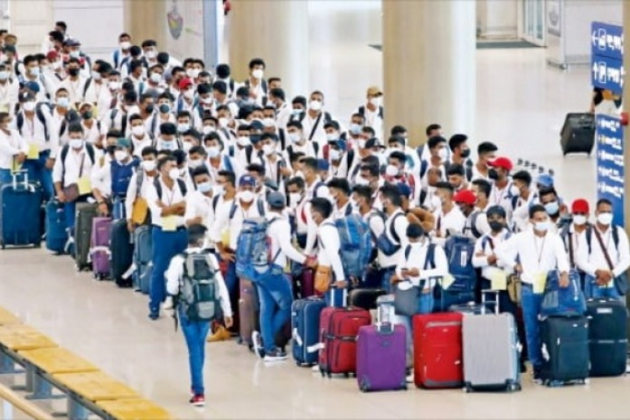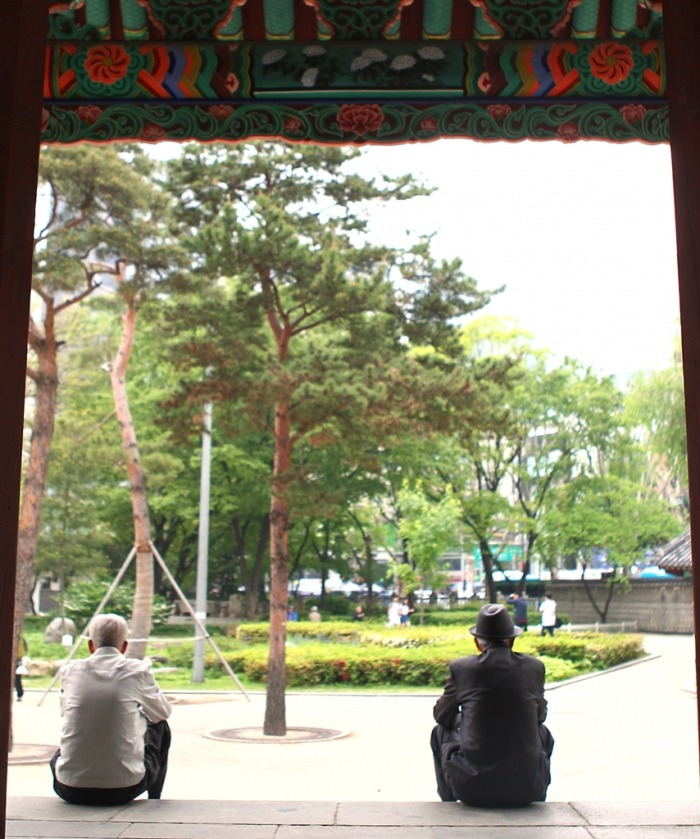Economy
S.Korea opens doors wider for skilled foreign workers
Asia’s rapidly aging fourth-largest economy is actively seeking measures to ease labor shortages in certain industries
By Jun 29, 2023 (Gmt+09:00)
3
Min read
Most Read
LG Chem to sell water filter business to Glenwood PE for $692 million


Kyobo Life poised to buy Japan’s SBI Group-owned savings bank


KT&G eyes overseas M&A after rejecting activist fund's offer


StockX in merger talks with Naver’s online reseller Kream


Mirae Asset to be named Korea Post’s core real estate fund operator



South Korea will raise the country’s visa quota for skilled foreign workers by 15 times from the previous level to ease chronic labor shortages, especially in the shipbuilding and agricultural sectors, amid the rapidly aging population.
The government will increase the annual quota for skilled worker visas to 30,000 this year from 2,000 last year to bring in more foreign workers, Justice Minister Han Dong-hoon said on Wednesday.
The latest measure is a drastic increase from the earlier announcement by the Ministry of Justice to increase this year’s visa quota for skilled foreign workers to 5,000 from 2,000.
The Korean government decided to open the door wider to foreign workers to help certain industries grappling with chronic labor shortages, such as the shipbuilding and agricultural sectors.
“It is urgent to find solutions to the labor shortage,” said Han. “The latest measure to expand the (skilled workforce visa) quota by 30 times from 2020’s quota of 1,000 should be sufficient to invite foreign workers to the country for now.”
Korea issues E-7-4 visas to skilled foreign workers. Foreigners who stay in Korea for five years and more to work legally with a non-professional visa E-9 are eligible to apply for E-7-4 visas.
Along with the latest quota change, the government will also lower the requirement to four or fewer years.
Given that the E-7-4 visa grants foreigners unlimited stay and allows the visa holders to invite their families, the new changes are expected to enable the visa holders to enjoy permanent residency status in Korea.
The government is also seeking to revise the law to allow seasonal foreign workers with E-8 visas to extend their stay in Korea within three months.
The latest measures are part of the President Yoon Suk Yeol administration’s efforts to ease the country’s labor shortages with the help of foreign workers.
LABOR SHORTAGES STEM FROM THE AGING POPULATION
The manufacturing industry of Asia’s fourth-largest economy is expected to lose about 240,000 skilled workers over the next 10 years due to the plunge in the country’s youth population, according to a report issued in May = by the Bank of Korea on the country’s demographic changes.

In April, the Korean government announced that the country will up the E-9 visa annual quota for workers who can work in the country’s backbone shipbuilding industry, expected to suffer a chronic labor shortage and decline to just 5,000 by 2025.
The country’s farming industry has been also grappling with the chronic labor shortage despite the government’s efforts to issue more temporary working visas to foreign workers.
The government is testing various programs to ease labor shortages across industries amid the falling youth population.
It has recently proposed a new foreign domestic helper pilot program to issue E-9 visas to 100 nannies from Southeast Asian countries to allow them to work for families in Seoul in the second half of this year.
It hopes the new affordable nanny program could ease household chores and childcaring burden of working parents in the capital city and boost the country’s birthrate.
The annual number of newborn babies in Korea dropped to about 400,000 in 2020 from a million in the 1970s.
The country recorded the world’s lowest total fertility rate of 0.78 in 2022 and reported 0.81 in the first quarter of this year, its lowest-ever fertility rate for the period. The total fertility rate measures the average number of children a woman bears in her lifetime.
It faces a grim demographic outlook forecasting that it could become the country with the most elderly in the world with about half of its population aged 65 or older by 2070.
Write to Hyeong-Ju Oh and Yong-Hee Kwak at ohj@hankyung.com
Sookyung Seo edited this article.
More to Read
-
 EconomySeoul eyes opening doors to domestic helpers from Southeast Asia
EconomySeoul eyes opening doors to domestic helpers from Southeast AsiaMay 08, 2023 (Gmt+09:00)
2 Min read -
 Shipping & ShipbuildingS.Korea launches foreign worker quota exclusively for shipbuilding sector
Shipping & ShipbuildingS.Korea launches foreign worker quota exclusively for shipbuilding sectorApr 25, 2023 (Gmt+09:00)
1 Min read -
 EconomyKorea to retain more skilled foreign workers with visa status upgrade
EconomyKorea to retain more skilled foreign workers with visa status upgradeDec 16, 2022 (Gmt+09:00)
2 Min read -
 EconomyKorea to increase foreign worker quota by 10,000 in 2022
EconomyKorea to increase foreign worker quota by 10,000 in 2022Sep 01, 2022 (Gmt+09:00)
1 Min read -

Comment 0
LOG IN


